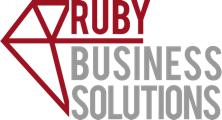Firstly, you should definitely be asking yourself this question if you aren’t already. For some reason a lot of business owners don’t pay themselves especially in the first few years of their business, but think of it this way, if you started a hands-off business you would have to employ someone to do the work, so if you are the one doing the work you should be paid. There are two different ways for a shareholder to pay themselves from a corporation and I will give you a brief overview and benefits of each:
Salary
Paying yourself a salary would be paying yourself on payroll like if you hired an employee. It involves setting up a payroll account with the CRA, deducting payroll taxes and remitting them. Don’t be daunted by this though, there are many payroll companies out there who make this process simple and even remit the taxes to the CRA for you. We also offer a payroll add-on if you would rather leave it to us. The benefits of paying yourself a salary are:
- RRSP Contribution Room
- Paying yourself a salary will allow you to build RRSP contribution room (dividends do not).
- CPP Contributions
- It also allows you to contribute to the Canada Pension Plan (dividends do not)
- Fewer Surprise Tax Bills
- Tax is withheld from each payment meaning that when you file your personal tax return you will have already paid income tax and will avoid a surprise personal tax bill (tax is not deducted from dividends often creating an amount owing when you file your return).
- Consistent Income
- When you are attempting to qualify for a mortgage, banks like to see steady, predictable income. Earning employment income like this will help show that steady income,- whereas dividend income may not be looked at as favorably.
- Expensed
- Your salary is expensed through the corporation possibly meaning a lower corporate tax bill (dividends are not).
Dividends
Paying yourself in dividends is as simple as writing yourself a cheque as no taxes need to be deducted, you will instead pay them when your tax return is filed. However, a T5 must be filed by your accountant for the total amount you withdraw in the year. Also, if you have multiple shareholders the dividends must be issued based on share ownership.
Another thing to note is that you must have retained earnings (profit from previous years) in your company to issue dividends.
The benefits of paying yourself dividends are:
- Lower Cost
- Paying dividends removes the need to contribute to CPP, which reduces corporate and personal costs meaning more flexible cash flow for the business.
- Simplicity
- If you own 100% of your corporation, you can just declare a dividend and transfer cash from the company to your personal account. No need to register for payroll and remit payroll taxes.
Which way creates less personal tax?
Oftentimes a mix of both will be used but ultimately this is not a simple answer and is really on a case-by-case basis. You could also try some calculations yourself with the SimpleTax Calculator, but I would highly recommend speaking to your accountant as they will be able to give you the best advice on this.

Chief Executive Officer
Ruby Business Solutions







